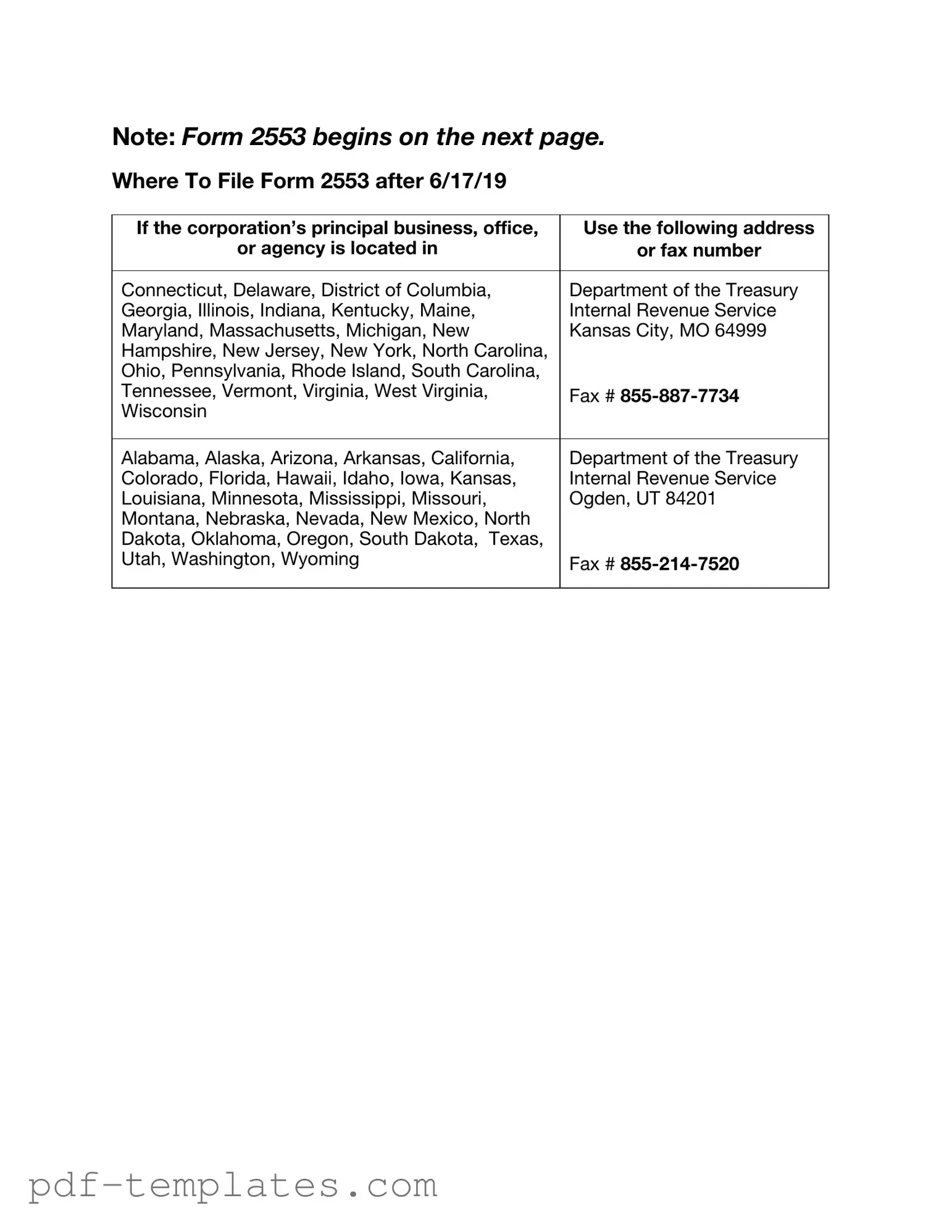The IRS Form 8832, also known as the Entity Classification Election, is similar to Form 2553 in that it allows businesses to choose how they want to be classified for federal tax purposes. While Form 2553 is specifically for S corporations, Form 8832 can be used by various types of entities, including limited liability companies (LLCs) and partnerships. Both forms require timely submission to ensure the desired classification is effective for the tax year in question, emphasizing the importance of understanding the implications of the chosen classification.
Form 1065, the U.S. Return of Partnership Income, shares similarities with Form 2553 in that both are used by entities that can elect to be taxed differently. While Form 2553 is for S corporations, Form 1065 is specifically for partnerships. Each form requires detailed information about the entity's income, deductions, and other financial details. The completion of these forms is crucial for compliance with tax regulations, and both forms must be filed annually to report the entity's financial activities.
Form 1120, the U.S. Corporation Income Tax Return, is another document that has similarities with Form 2553. Both forms are utilized by corporations for tax reporting purposes. While Form 2553 is used to elect S corporation status, Form 1120 is filed by C corporations to report their income, gains, losses, and deductions. Understanding the differences between these forms is essential for business owners as they navigate their tax obligations and make informed decisions about their entity structure.
The IRS Form 941, Employer's Quarterly Federal Tax Return, is related to Form 2553 in that both forms involve reporting tax-related information for businesses. While Form 2553 is focused on the election of S corporation status, Form 941 is used by employers to report income taxes, Social Security tax, and Medicare tax withheld from employee wages. Timely filing of Form 941 is critical for compliance and to avoid penalties, making it essential for S corporations to be aware of their obligations under both forms.
Form 1120-S, the U.S. Income Tax Return for an S Corporation, directly relates to Form 2553 since it is the form that S corporations must file once they have elected S corporation status through Form 2553. This form provides a way for S corporations to report their income, deductions, and credits, and it is essential for ensuring that the tax benefits of S corporation status are realized. The timely filing of Form 1120-S is crucial for maintaining compliance with IRS regulations.
Form 1065-B, the U.S. Return of Income for Electing Large Partnerships, is another document that shares similarities with Form 2553. Both forms cater to specific types of business entities that wish to elect a particular tax treatment. While Form 2553 is for S corporations, Form 1065-B is designed for large partnerships that have made an election to be treated as a partnership for tax purposes. Understanding the nuances of these forms is important for businesses to ensure they are meeting their tax obligations appropriately.
Form 8868, Application for Extension of Time to File an Exempt Organization Return, can be seen as related to Form 2553 in that both involve the timely submission of forms to the IRS. While Form 2553 is for electing S corporation status, Form 8868 allows organizations to request an extension for filing their annual returns. This form is critical for ensuring that organizations do not face penalties for late filing, emphasizing the importance of staying on top of tax deadlines.
Form 5471, Information Return of U.S. Persons With Respect to Certain Foreign Corporations, is another document that, while different in purpose, can be linked to Form 2553 in terms of compliance and reporting requirements. Both forms require detailed information about the entity's financial status and ownership structure. For U.S. shareholders of foreign corporations, filing Form 5471 is essential to avoid significant penalties, much like the timely filing of Form 2553 is crucial for maintaining S corporation status.
Lastly, Form 990, Return of Organization Exempt From Income Tax, while primarily for tax-exempt organizations, shares the commonality of being a required IRS form that must be filed by certain entities. Similar to Form 2553, which is focused on S corporations, Form 990 requires comprehensive financial reporting and compliance with IRS regulations. Organizations must be diligent in their filing to maintain their tax-exempt status, highlighting the need for thorough understanding and adherence to IRS requirements.
